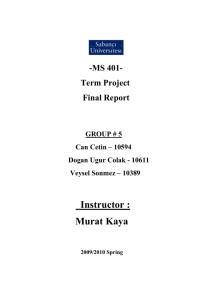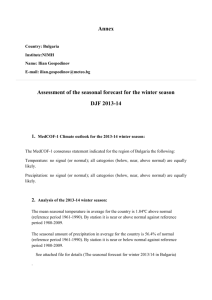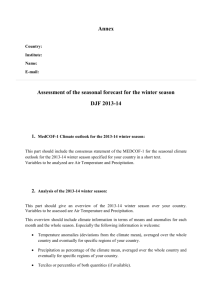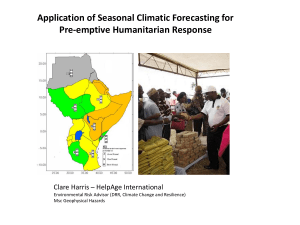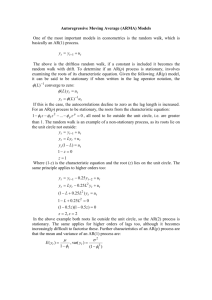MS 401_group5_termproject_progressreport
advertisement
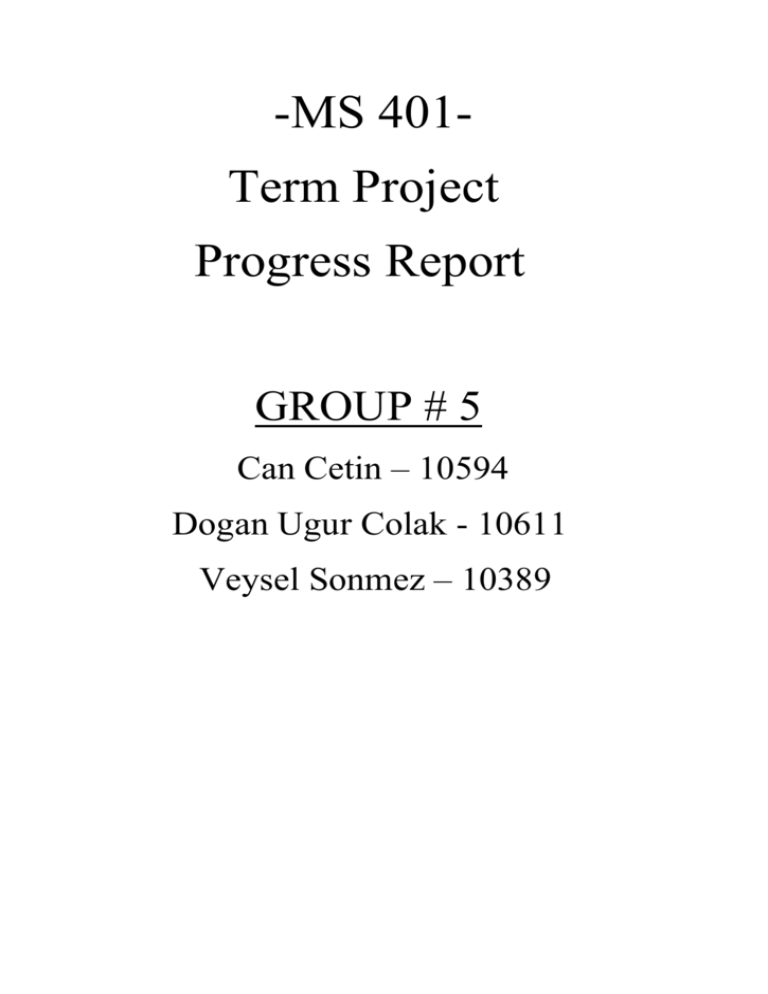
-MS 401Term Project Progress Report GROUP # 5 Can Cetin – 10594 Dogan Ugur Colak - 10611 Veysel Sonmez – 10389 Part I: Forecasting: The forecasting part of the projects requires the analysis of 6 different data sets, in the title of “Products” with respect to the Triple Exponential Smoothing Method (Winter’s Method). Therefore, we worked on and determined few procedures in a given specific method in order to observe the forecasts as Group 5. Part a) This part of the question requested the forecast datas between periods of 25 and 36 based on the demand datas from period 1 to 24. First of all, we need to determine and initialize specific aspects of the process to make forecast according to Winter’s Method. The demand datas each of 6 products are involved as a dozen in each of 2 seasons. Based on this information, we might determine the middle points of each season (V1 and V2), in which we need to calculate the average of each 12 datas. It is obvious that the two middle points might construct a line that enables us to make forecast with respect to Winter’s Method. Specifically, if we may characterize the line by finding slope (Go) and intercept (So) of the line, we could initialize and update the forecasts. Moreover, we could also update So and Go. It is commonly known that Winter’s Method is used for the seasonal datas. Therefore, we need to find the seasonal factors (Cn) for each period is involved in a specific season. The middle points of the datas are fairly beneficial for this procedure. We might determine the distances of the periods from the V points and each seasonal factor might be found with this formula: Cn = Dn / (V + distance * Go) , for n=1,..., 24 After finding all seasonal factors for the each season, the seasonal factors for each of 12 periods are calculated by taking the average of the seasonal factors of the equivalent periods belong to different seasons. It is like below: C_(period N) =( 𝐶𝑛 +𝐶𝑛+12 ) / 2, for N=1,...,12 Summation of each seasonal factors must be equal to the number of the periods ( ∑12 𝑁=1 𝐶_(𝑝𝑒𝑟𝑖𝑜𝑑 𝑁) = 12 ). If they are not, all values are normalized. After the determination of the all aspects, the forecast might be made. Because of the fact that there is not a data set for the periods between 25 and 36, we make forecasts n-step ahead. Part b) This part of the project would like us to make one – step forward forecast for the periods between 25 and 28 by using the demand datas from period 1 to 28. In addition, we are requested to assign Alpha, Beta and Gamma smoothing constants that minimizes MSE by trying at least 4 or 5 values. First and foremost, we have the initialization value from part a). Therefore, the only procedure we may apply in part b) is to make forecasts in Winter’s Method for at least 4 or 5 times according to different Alpha, Beta and Gamma values. It is clear that the more different constants values we make forecasts with respect to, the more probable for us to approximate the minimum MSE value.


